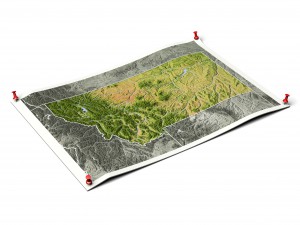Dickinson, ND –
In 2012, North Dakota made oil headlines by taking over as the number two producer in the nation.
While production continues to ramp up daily, there is one part of western North Dakota were the excitement of oil has gone bust.
Chesapeake’s attempt to find the southern edge of the Bakken, is being described as the largest failure in drilling in the state since the 1980’s.
There are a few well sites in western North Dakota that look more like ghost towns than multi-million dollar holes.
Chesapeake secured leases in a large part of the state, south of I-94.
They drilled 8 wells, only 3 produced oil — but at minimal amounts.
So little that all holes have been shut in.
Director of Mineral Resources for the state of North Dakota, Lynn Helms, says “geologically, there were some surprises. We knew that there wouldn’t be any lower Bakken Shale in that area. What surprised us was to find out there’s no upper Bakken Shale in that area.”
Chesapeake’s wells, a bust.
It’s the largest failure in recent oil history in North Dakota.
“That pretty much condemns an area, if you don’t have Bakken present, the risk for finding oil goes way up and you need to have some structure,” says Helms.
The wells are scattered to the south of I-94 between Dickinson and Belfield.
Tanks are there, collecting nothing.
Well heads are in place, abandoned.
And at one site a pumping unit has been partially removed.
Helms says, “there’s only one well that’s made any measurable oil, and it’s about 10 percent oil at best, 90% water.”
Chesapeake was after the chance they may hit oil in this less developed area.
Helms says Chesapeake invested 60 million in the prospect of hitting oil.
That excludes money spent on leases.
“Because all the drilling had been taking place north of there and the geological risk was zero, it made it look too easy. So in terms of the technology of drilling and fracking, well prepared but in terms of geology probably not,” says Helms.
Chesapeake’s risk taking — provided large clues about where the Bakken ends. “It looks like 4-6 miles south of I-94 the Bakken Shale disappears,” says Helms.
Their experimental drilling will also provide answers about what else could be below.
Kathy Neset with Neset Consulting says, “they’re taking that information and they’re studying it. They are going to learn everything they can from those wells.”
Neset provides geology services to oil companies.
She says this is not the end of Chesapeake in North Dakota.
“They’re not going to say, we’re going to drill one well, if it doesn’t work, we are out of here. They have a very committed program in drilling and evaluating, I think we’ll see Chesapeake back here. They may be disappointed right now. But I think they’ll be back,” says Neset.
Maybe back and drilling in another formation.
Both Neset and Helms say there’s potential in the Tyler formation.
Helms says, “the area does lie between two producing Tyler fields and has mature Tyler source rock, so it’s not the end of the story by any means.”
Helms says Chesapeake will be forced to either reenter the well sites or to plug and abandon them soon.
The state only allows a non paying well to stay on the landscape for a year.
Retreived 1-2-2013. KX News.







